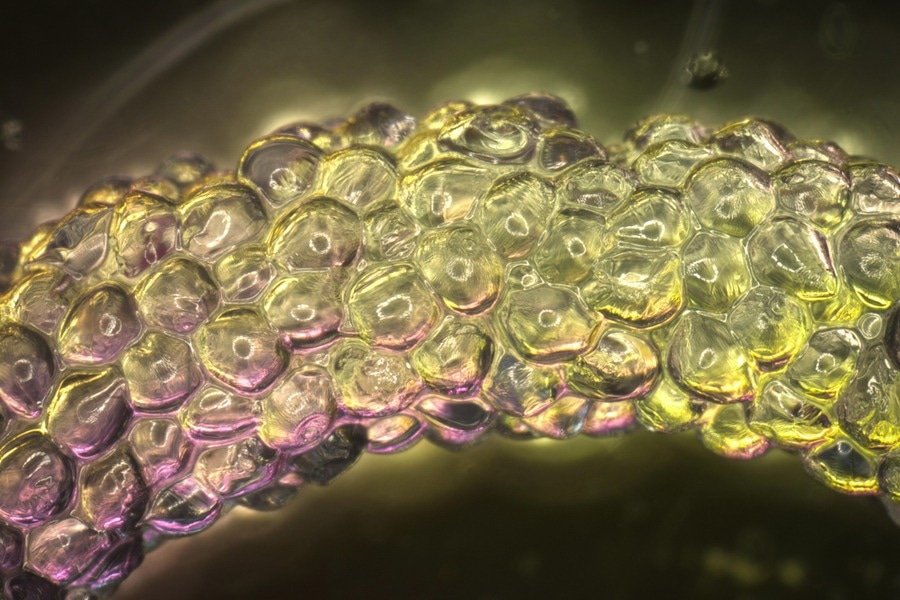Reviewed by Alex SmithFeb 1 2023
Injectable gel-like substances have enormous potential for repairing damaged tissues or creating brand-new tissues. Although many scientists are striving to create these hydrogels for biomedical applications, only a few of them have reached the clinic.
 MIT and Harvard researchers have developed computational models that can predict the properties of materials made from squishy hydrogel blocks. Image Credit: MIT and Harvard University
MIT and Harvard researchers have developed computational models that can predict the properties of materials made from squishy hydrogel blocks. Image Credit: MIT and Harvard University
Researchers at the Massachusetts Institute of Technology (MIT) and Harvard University have developed computer models to determine the material’s structure, mechanical characteristics, and functional performance consequences. These materials are produced from microscale building blocks similar to squishy LEGOs.
The development of materials that can be injected for various uses has, up to now, mostly been a trial-and-error process. The researchers expect that their new framework will make this procedure simpler.
It is really exciting from a material standpoint and from a clinical application standpoint. More broadly, it is a nice example of taking lab-based data and synthesizing it into something usable that can give you predictive guidelines that could be applied to things beyond these hydrogels.
Ellen Roche, Associate Professor, Mechanical Engineering, Institute for Medical Engineering and Science, Massachusetts Institute of Technology
The study’s senior authors are Roche and Jennifer Lewis, the Hansjörg Wyss Professor of Biologically Inspired Engineering at Harvard, and it was published on January 31st, 2023 in the journal Matter. The study’s lead author is Connor Verheyen, a graduate student in the Harvard-MIT Program in Health Sciences and Technology.
Material Modeling
A granular matrix is formed when several hydrogel pieces are tightly packed together to resemble gel. According to the situation, these materials could behave as a solid or a liquid, which qualifies them for applications like 3D-bioprinting engineered tissues.
They could release medicines after they were injected or implanted in the body, or they could aid in the regeneration of damaged tissue.
These materials have a lot of flexibility and customizability, so there is a lot of excitement about using them for biomedical applications.
Connor Verheyen, Study Lead Author and PhD Student, Medical Engineering and Medical Physics, Harvard-MIT Division of Health Sciences and Technology
Verheyen, who is mentored jointly by Lewis and Roche, started attempting to find out how to make these materials consistently injectable while working in Lewis’ lab. To optimize the gels’ structure and mechanical behavior for injectability, this endeavor proved to be challenging and included a lot of trial-and-error experimentation.
Verheyen added, “That spurred the effort to take the empirical data, turn it into something that a machine could read and work with, and then ask it to build a predictive map that we could interrogate to help us understand what was going on and how to go to the next step.”
The researchers staged the assembling process to develop their design framework. They used information from their own trials, which were conducted under a range of different situations, to simulate each of these steps independently.
The model initially examined the relationship between the attributes of bioblocks and their starting materials and assembling methods. The bioblocks are assembled to create “granular hydrogels,” which are structures in the second stage.
The size and stiffness of the bioblocks, the viscosity of the interstitial fluid between the blocks, and the dimensions of the needle and syringe used to inject the gel are a few aspects that affect the injectability of the final gel, according to the study team’s modeling.
Better Injectability
Instead of having to go through a lengthy trial-and-error process for each new material, the researchers can now use their model to determine the optimal method to manufacture a material with the features they require for a certain application.
“Our long-term goal was to get to the point where we had reliable and predictable injection properties, because that was something that we really struggled with in the lab—getting these materials to flow properly,” Verheyen added.
Now, he and other researchers in Roche’s lab intend to apply this modeling strategy to attempt to create materials that could be applied in clinical settings, such as the repair of heart defects or the delivery of drugs to the gastrointestinal tract.
The models and the data that were used to develop them have also been made publicly accessible to other laboratories by the researchers.
Roche concluded, “It is all open source, and hopefully it will reduce the amount of frustration with issues that you might have reproduced something that happened in another lab, or even within one lab when you’re transferring knowledge from one person to another.”
The National Science Foundation, the MathWorks Seed Fund grant, and the Vannevar Bush Faculty Fellowship Program provided funding for the study.
Journal Reference:
Verheyen, C. A, et al. (2023) Integrated data-driven modeling and experimental optimization of granular hydrogel matrices. Matter. doi:10.1016/j.matt.2023.01.011.